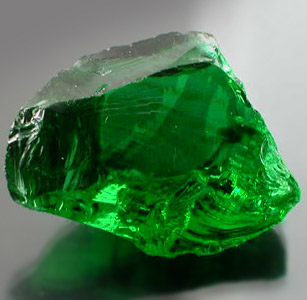
晶系:无结晶性
硬度:6-6.5
代表产地:
捷克
特性:
捷克陨石在 6400 万年前是如何光临地球的,一直是个未解的谜,但是他小小的体积里面文藏有极大的能量,千百年来广受各家喜爱,并且运用极广.绿色的能量对因心轮,但也可以运用在全身.
使用方法
1.捷克陨石的绿色光对因心轮,当配戴时,请调整长度崔挂在心轮,常常偷着阳光,灯光来看它的绿色,并观想全身笼罩在相同的绿色光里面,有助于建立健康,开朗,活泼,乐观的人生观,也容易较到好朋友,得到贵人相助.
2.信心不足的人或是感觉需要一点运气的时候,请将捷克陨石拿到左手来把玩,极易吸收其绿色的幸运之光;平常时,建议将陨石放在身上的小口袋里面,随时掌握的到.新时代人士称为(忘忧石)
3.出门接生意,谈判,协商,或是打官司时,记得随身佩带捷克陨石,除了可以加强本身气势之外,还可以多一点(幸运)的能量.
4.常常需要出入医院,病房,太平间,墓园,丧家,建议,看守所等地,或是与重病患,精神异常者,或极为倒霉人士接触的朋友,记得随身配带大颗的捷克陨石,以防各种病气,浊气,杂气的身上;病情定期每周消磁一次.
5.有忧郁症的人们,可以使浙江捷克陨石放在心轮上摩擦,一方面配合深呼吸,可以将心中的副能量释放出去,恢复一个健康,快乐,正常的人生.
6.建议将捷克陨石佩带在有自杀倾向的朋友身上,一方面可以消除他的犹豫副能量,一方面可防止周昭的外灵,幽魂趁机会找替身.
7.诺是胫骨皮肉那里酸痛,或是关节炎,风湿痛,五十肩等等,可以试着用头视角部将陨石贴在痛点,多可以减轻痛楚,改善状况.
8.诺是肝功能不好,容易疲劳厌倦,建议在晚上睡觉时,将绿色的陨石贴在右胸上,有助于解放干部的副能量,沉稳睡眠,消除所有累计的疲劳压力.
9.将捷克陨石洗干净,夜晚浸泡已被饮用水内,隔天早上起床,趁空腹时喝下,有助于消除肝脏,肾脏里累计的疲劳副能量,能加强一天的能量与冲劲.
10.静坐时,可以将捷克陨石贴近海底轮,或是小腹丹田的部位,有助于启动内身的能量,促进气机顿环旋转(本身体制不佳,气虚的人是,可能因为 [虚不受补],反而会觉得头晕,不舒服,此时将陨石取下即可;另找时间,自行锻炼,才能吸收其能量)
11.捷克陨石主要对因心轮,但诺是感觉身体其他部位不舒服时,也可以以捷克陨石来逆转始终摩擦旋转可相关轮位,有助于将副能量抽出,排除,可以净化体质.
12,运动会在进行最后决赛时,可以将捷克陨石紧握在左手,或是贴身挂在胸膛上,有助于点绕爆发力,赢得最后胜利.
13.西洋新时代领袖人士,有许多将捷克陨石挂在第三眼出静心冥想,以开发天眼功能;但是先决条件是当事人本身的体制必须健康,强壮,否着承受不起,反而容易头晕目眩,恶心,产生不适应症状.
14.有西方灵修人士宣称,佩带着捷克陨石来做灵通传导 (Channelling),有助于于高灵灵连接感应,并能获得其智慧的讯息.
15.有人握着,佩带捷克陨石来打坐修行,有助于进入气功状态,也能加强灵通的能力.
16.据说,在枕头下放一个捷克陨石再枕头下面睡觉,有助于星光个体的灵魂出游,也有可能会接触到外星人,并能预知将通.
What Is Moldavite?
Moldavite's bottle-green glass colour led to its being commonly called Bouteillen-stein, and at one time it was regarded as an artificial product, but this view is opposed to the fact that no remains of glassworks are found in the neighbourhood of its occurrence; moreover, pieces of the substance are widely distributed in Middle to Upper Miocene and younger fluvial clays and gravelly sands in Bohemia and Moravia.
In 1900, F. E. Suess pointed out that the gravel-size moldavites exhibited curious pittings and wrinkles on the surface, which could not be due to the action of water, but resembled the characteristic markings on many meteorites. Boldly attributing the material to a cosmic origin, he regarded moldavites as a special type of meteorite for which he proposed the name of tektite. However, for a long time, it was generally believed to be a variety of obsidian. Because of their difficult fusibility, extremely low water content, and its chemical composition, the current overwhelming consensus among earth scientists is that moldavites were formed 15 million years ago during the impact of a giant meteorite in present-day Nördlinger Ries. Splatters of material that was melted by the impact cooled while they were actually airborne and most fell in central Bohemia—traversed by Vltava river (German: Moldau). Currently, moldavites have been found in area that includes southern Bohemia, western Moravia, the Cheb Basin (northwest Bohemia), Lusatia (Germany), and Waldviertel (Austria).Isotope analysis of samples of moldavites have shown a beryllium-10 isotope composition similar to the composition of Australasian tektites (Australites)and Ivory Coast tektites (Ivorites). Their similarity in beryllium-10 isotope composition indicates that moldavites, Australites, and Ivorites consist of near surface and loosely consolidated terrestrial sediments melted by hypervelocity impacts.
99 % of all moldavite finds have provided the South Bohemian localities, 1% were found in South Moravian localities. Only tens of pieces were found in the Lusatian area (near Dresden), Cheb basin area (West Bohemia) and Northern Austria (near Radessen). Principal occurrences of moldavites in Bohemia are associated with Tertiary sediments of the České Budějovice and Třeboň Basins. The most prominent localities are concentrated in a NW-SE strip along the western margin of the České Budějovice Basin. Majority of these occurrences are bound to the Vrábče Member and Koroseky Sandy Gravel. Prominent localities in the Třeboň Basin are bound to gravels and sands of the Domanín Formation. In Moravia, moldavite occurrences are restricted to an area roughly bounded by the towns of Třebíč, Znojmo and Brno. Taking into account the number of pieces found, Moravian localities are considerably less productive than the Bohemian ones; however, the average weight of the moldavites found is much higher. The oldest (primary) moldavite-bearing sediments lie between Slavice and Třebíč. Majority of other localities in southern Moravia are associated with sediments of Miocene as well as Pleistocene rivers that flowed across this area more or less to the southeast, similar to the present streams of Jihlava, Oslava a Jevišovka.
How To Use Moldavite:
The total amount of Moldavite scattered around the world is estimated at 275 tons. There is now only one sand pit, which (legally) produces moldavites. It is predicted that in less than ten years from now commercial Moldavite mining will come to an end. After this time, there will be virtually no appreciable amount of gem-grade Moldavite left in the ground.
There are typically two grades of moldavite: high quality, often referred to as museum grade, and regular grade. Museum and regular grade moldavite can be told apart by the way they look: The regular grade pieces are usually darker and more saturated in their green colour, and the surface is seen as closely spaced pitting or weathering. This type sometimes appears to have been broken apart from a larger chunk. Moldavite is also found to be compatible with borosilicate glass and can be fused to it with ease.
The museum grade has a distinct fern-like pattern and is much more translucent than the regular grade. There is usually a fairly big difference in the price between the two. The museum grade "flower bursts" are much more prized by the connoisseur. High-quality moldavite stones are often used in hand-crafted jewellery and thus enter the market away from mainstream jewellery fashions, more centred around art and craft, and as such have gained an almost cult status.
There is a new Moldavite museum in Český Krumlov, Czech rep..











0 comments:
Post a Comment